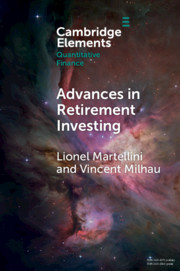Element contents
Advances in Retirement Investing
Published online by Cambridge University Press: 12 August 2020
Summary
- Type
- Element
- Information
- Series: Elements in Quantitative FinanceOnline ISBN: 9781108917377Publisher: Cambridge University PressPrint publication: 10 September 2020
References
- 6
- Cited by

